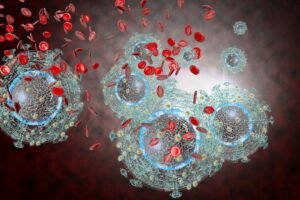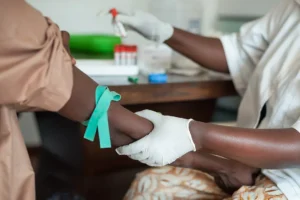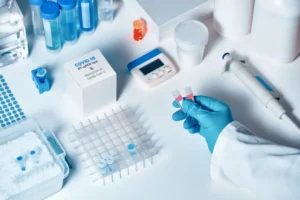HIV/AIDS
Introduction
What is HIV/Makes a difference?
(Human Immunodeficiency Disease) is a disease that pursues the body’s safe structure, unequivocally the CD4 cells (Lymphocytes), which help the protected system with fighting off pollutions. Whenever left untreated, HIV diminishes the amount of CD4 cells in the body, making the singular more vulnerable to defilements and certain sicknesses. Helps (Helps) is the most moderate period of HIV infection.

Relevance and Importance of Understanding HIV/AIDS
Getting a handle on HIV/Helps is critical in light of its overall impact on broad prosperity. Despite impels in therapy, HIV/Helps remains a tremendous clinical issue all over the planet, particularly impacting powerless masses, for instance, LGBTQ+ social class, people living in poverty, and locale with confined permission to clinical consideration.
Types and Categories
HIV versus Makes a difference: Sorting out the Differentiation
HIV is the disease that causes Makes a difference. HIV infection propels through a couple of stages, finally provoking Aides if not treated. Helps is investigated when the immune system is genuinely hurt, and the individual has somewhere around one sharp illnesses (like tuberculosis or certain dangerous developments) or an astoundingly low number of CD4 cells.
HIV-1 and HIV-2: Differences and Similarities
HIV-1 is the most notable sort all over the planet, while HIV-2 is more surprising and in a general sense found in West Africa. The two sorts lead to Helps if untreated, yet HIV-2 advances even more relaxed and is less compelling initially stages.
Acute HIV Infection
The extreme stage occurs inside 2 a month in the wake of beginning sickness with HIV. Incidental effects, if present, seem to be flu like illness, making it attempting to investigate. In any case, the contamination is significantly overpowering during this stage.
Chronic HIV Infection
Steady HIV defilement is the stage where the disease is dynamic yet reproduces at very low levels. Without treatment, this stage can continue onward for a seriously significant time-frame, gradually crippling the protected system.
Symptoms and Signs
Early Symptoms of HIV
Early aftereffects can consolidate fever, headache, sore throat, extended lymph centers, rash, and depletion. These aftereffects can seem to be other typical sicknesses, making HIV testing to dissect considering incidental effects alone.
Advanced Symptoms of HIV/AIDS
As HIV advances to Helps, incidental effects fall apart and may integrate quick weight decrease, rehashing fever, night sweats, progressing free guts, and deft infections like tuberculosis and cytomegalovirus (CMV).
Opportunistic Infections Associated with AIDS
Helps incapacitates the protected system, allowing insightful illnesses and certain growths to thrive. Typical insightful sicknesses integrate pneumonia, candidiasis (thrush), and Kaposi’s sarcoma.

Causes and Risk Factors
HIV Transmission Routes
HIV is sent through contact with explicit body fluids (blood, semen, vaginal fluids, rectal fluids, and chest milk) from an individual spoiled with HIV. The most generally perceived strategies for transmission integrate unprotected sexual contact, sharing needles or needles, and mother-to-young person transmission during work or breastfeeding.
High-Risk Behaviors
Taking part in unprotected sex, having different sexual assistants, sharing needles or needles for drug use, and getting risky blood bondings (unprecedented in countries with extreme screening strategies) increase the bet of HIV transmission.
Socioeconomic Factors
Poverty, nonappearance of induction to clinical consideration, shame, detachment, and direction lopsidedness add to the spread of HIV/Helps and block permission to expectation, treatment, and sponsorship organizations.
Impact of Stigma on HIV/AIDS
Shame and isolation considering HIV status avoid individuals from getting taken a stab at, revealing their status, and getting to clinical consideration organizations. Having a tendency to disgrace is fundamental for strong HIV/Helps evasion and treatment tries.
Diagnosis and Tests
HIV Antibody Test
The HIV immunizer test distinguishes antibodies conveyed by the body considering HIV tainting. It will in general be done using blood, oral fluid, or pee. A positive result shows HIV tainting, yet further testing is supposed to insist.

Viral Load Testing
Viral weight testing gauges the amount HIV RNA (genetic material) in the blood. It helps screen the feasibility of antiretroviral treatment (Craftsmanship) and disease development.
CD4 Cell Count Test
CD4 cell count assesses the amount of CD4 cells in an illustration of blood. It reflects the strength of the protected system and guides decisions regarding when to start Workmanship and screen ailment development.
Early Infant Diagnosis
Early child end incorporates testing babies brought into the world to HIV-positive mothers to distinguish HIV illness early. Early assurance and treatment can essentially additionally foster outcomes for HIV-uncovered infant kids.
Treatment Options

Antiretroviral Therapy (ART)
Craftsmanship incorporates taking a blend of HIV medications everyday. It holds HIV back from copying and lessens the viral weight in the body, allowing the safe structure to recover and work as a matter of fact.
Combination Therapy
Mix treatment (or antiretroviral blend treatment, Craftsmanship) regularly incorporates taking somewhere around three antiretroviral solutions from something like two different drug classes. This approach decreases the bet of HIV becoming impenetrable to treatment.

Treatment Guidelines
Treatment rules recommend starting Workmanship immediately after HIV examination, paying little psyche to CD4 count or clinical stage. Adherence to treatment is imperative for long stretch viral camouflage and staying aware of immune prosperity.
Management of Opportunistic Infections
Hindering and treating canny pollutions (OIs) are central pieces of HIV/Helps care. OIs vary considering geographic region and the particular’s safe status, requiring custom fitted treatment moves close.

Preventive Measures
HIV Prevention Strategies
Convincing countering techniques consolidate propelling safer sexual practices (e.g., condom use), giving naughtiness decline organizations to people who imbue drugs (e.g., needle exchange programs), and ensuring permission to HIV testing and coordinating organizations.
Pre-Exposure Prophylaxis (PrEP)
PrEP incorporates requiring an everyday HIV medicine (e.g., tenofovir/emtricitabine) to hinder HIV pollution in people who are at high bet, for instance, HIV-critical individuals with HIV-positive associates or those taking part in high-risk approaches to acting.
Post-Exposure Prophylaxis (PEP)
PEP incorporates taking antiretroviral drugs in somewhere near 72 hours after probable receptiveness to HIV to hinder pollution. It is used in emergencies (e.g., word related receptiveness or unprotected sex) and requires brief beginning and adherence.
Importance of Education and Awareness
Preparing and care campaigns reduce shame, advance HIV testing, support treatment adherence, and empower individuals to reach informed decisions about their sexual prosperity and HIV evasion procedures.
Personal Stories or Case Studies
Living with HIV: A Personal Journey
Individual stories from individuals living with HIV/Helps highlight the challenges, flexibility, and experiences of managing the condition. These records advance compassion, lessen disgrace, and spur others to search for help and treatment.
Overcoming Challenges: Real-Life Experiences
Relevant examinations show productive ways of managing beating challenges associated with HIV/Helps, for instance, seeking to therapy, investigating clinical benefits structures, and supporting for methodology changes to additionally foster HIV/Helps care.
Expert Insights
Medical Professional’s Perspective on HIV/AIDS
Ace pieces of information from clinical benefits providers, trained professionals, and general prosperity specialists give proof set up information concerning HIV/AIDS
expectation, treatment movements, and approaches for dealing with tenacious outcomes.
Advocacy and Support Organizations
Endlessly backing affiliations expect a basic part in exposing issues, offering sorts of help (e.g., HIV testing, coordinating), pushing for methodology changes, and supporting individuals affected by HIV/AIDS and their organizations.

Conclusion
HIV/AIDScontinues to be an overall prosperity challenge, impacting countless people all over the planet. Getting a handle on the contamination, its transmission, expectation strategies, and treatment decisions is principal for watching out for the pandemic as a matter of fact.
- What is HIV and AIDS?
- HIV (Human Immunodeficiency Virus) is a virus that attacks the body’s immune system, specifically the CD4 cells (T cells), which help the immune system fight off infections. AIDS (Acquired Immunodeficiency Syndrome) is the most advanced stage of HIV infection.
- How is HIV transmitted?
- HIV is transmitted through contact with certain body fluids from a person infected with HIV, such as blood, semen, vaginal fluids, rectal fluids, and breast milk. The most common modes of transmission include unprotected sexual contact, sharing needles or syringes, and from mother to child during childbirth or breastfeeding.
- What are the early symptoms of HIV?
- Early symptoms may include fever, headache, rash, sore throat, swollen lymph nodes, and fatigue. These symptoms can resemble those of other viral illnesses, so testing is crucial for diagnosis.
- How can HIV be prevented?
- HIV prevention methods include practicing safe sex (using condoms consistently and correctly), avoiding sharing needles or syringes, getting tested and knowing your HIV status, using pre-exposure prophylaxis (PrEP) for individuals at high risk, and using post-exposure prophylaxis (PEP) immediately after potential exposure.
- Is there a cure for HIV?
- Currently, there is no cure for HIV, but it can be managed effectively with antiretroviral therapy (ART). ART helps control the virus, allowing people with HIV to live long and healthy lives. Research into a cure continues.
Note:-
The information provided on this blog regarding medicnn price and side effects is solely based on data collected from public domains. I am not a doctor or a medical professional. While i strive to provide accurate and up to date information, I cannot guarantee the absolute accuracy or completeness of the data. It is always recommended to consultee with a qualified healthcare professional or doctor for personalized medical advice and information. the content on this blog should not be considered a substitute for professional provided at their own discretion and risk. I do not assume any responsibility for any consequences arising from the use of the information on this blog.
